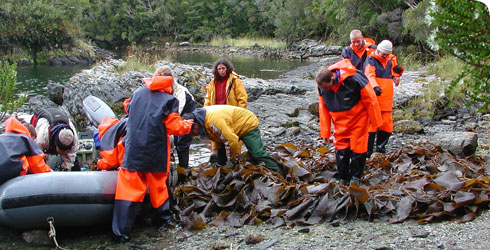Conservation
One of the greatest threats to the conservation status of well-developed Macrocystis forests is herbivory. For example, a large increase in sea urchin numbers off the Californian coast led to them grazing the Macrocystis, and resulted in complete destruction of the beds.
Otters - which are voracious urchin eaters - are important for preserving these forests.
Sludge, silt or sewage is known to destroy the microscopic stage of Macrocystis.
Macrocystis forest communities are of great aesthetic value and support both commercial fishing operations and recreational activities especially scuba diving.
Toolbox
Glossary
Abalone
Edible sea snails.
Alginates
A compound rendered from seaweed that can be used to make temporary casts.
Fronds
Leaf-like parts of the seaweed.
Holdfasts
Root-like structures that anchors the seaweed to a substrate.
Macroscopic
A size large enough to be visible with the naked eye.
Microscopic
A size so small that is only visible with a lens or microscope.
